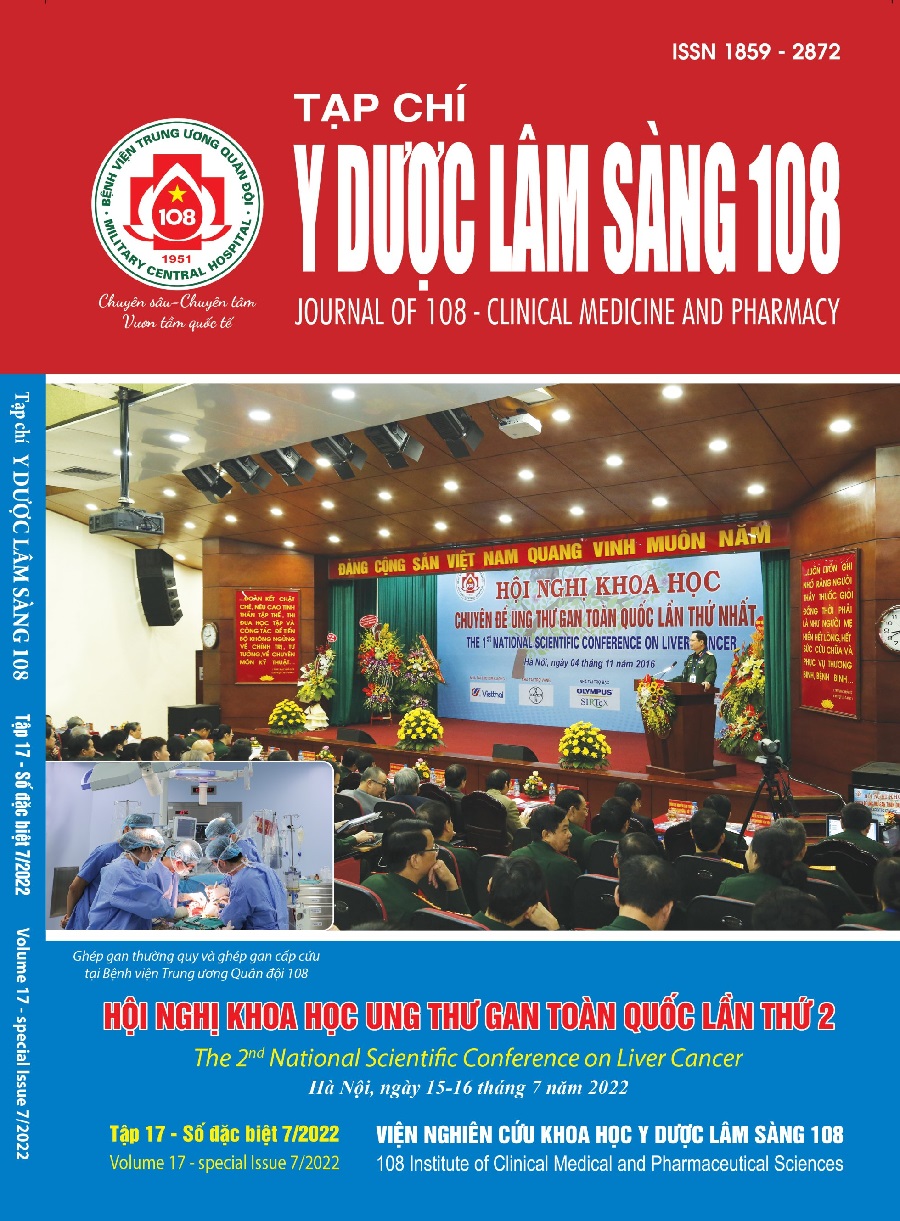Evaluation of initial results of magnetic resonance imaging using gadoxetic acid in diagnosing focal liver lesions at 108 Military Central Hospital
Main Article Content
Keywords
Abstract
Magnetic resonance imaging (MRI) plays an important role in the early detection of benign or malignant liver lesions. Hepatobiliary contrast agents increase the accuracy of MRI in the differential diagnosis of focal liver lesions and reduce the number of unspecified liver lesions. Objective: To evaluate the role of MRI using Primovist acid in the diagnosis of focal liver lesions that are difficult to identify on computed tomography or ultrasonography. Subject and method: Study on 34 male and female patients, the average age was 56 (age) assigned to have MRI with Primovist contrast injection on MRI system 3.0T, discovery 750 (GE). Result: 34 patients, including 48 lesions, 28 hepatocellular carcinoma lesions (58.3%), focal nodular hyperplasia 5 (10.4%), neoplastic nodules 4 (8.3%), hemangiomas 2 (4.2%), metastasis 2 (4.2%), cholangiocarcinoma 1 (2.1%), parasites 1 (2.1%), other lesions 5 (10.4%) including liver abscess, infected cyst. There were 23 patients with a history of hepatitis B and/or cirrhosis (67.6%). Conclusion: The research shows that hepatobiliary contrast agents increases the diagnostic accuracy of MRI hepatocellular carcinoma in cirrhotic patients, small metastases, differentiation between focal nodular hyperplasia and adenoma, hemangiomas, dysplastic nodule and early-stage hepatocellular carcinoma.
Article Details
References
2. Kim et al (2017) Washout Appearance in Gd-EOB-DTPA, Enhanced MR Imaging: A Differentiating Feature Between Hepatocellular, Carcinoma with Paradoxical Uptake on, the Hepatobiliary Phase and Focal, Nodular Hyperplasia-Like Nodules, Journal of Magnetic Resonance Imaging Magn Reson Imaging 45(6): 1599-1608.
3. Kitao et al (2018) Differentiation Between Hepatocellular Carcinoma Showing Hyperintensity on the Hepatobiliary Phase of Gadoxetic Acid-Enhanced MRI and Focal Nodular Hyperplasia by CT and MRI. AJR Am J Roentgenol 211(2): 347-357.
4. Kim et al (2021) Value of gadoxetic acid-enhanced MR imaging and DWI in classification, characterization and confidence in diagnosis of solid focal liver lesions. Scand J Gastroenterol 56(1): 72-805.
5. Kitkarun S et al (2013) Added value of hepatobiliary phase gadoxetic acid-enhanced MRI for diagnosing hepatocellular carcinoma in high-risk patients. World J Gastroenterol 19(45): 8357-8365.
6. Marrero et al (2014) The diagnosis and management of focal liver lesions. Am J Gastroenterol 109(9): 1328-1347.
7 Zech et al (2020) Consensus report from the 8th International Forum for Liver Magnetic Resonance Imaging. European Radiology 30: 370-382.
 ISSN: 1859 - 2872
ISSN: 1859 - 2872
